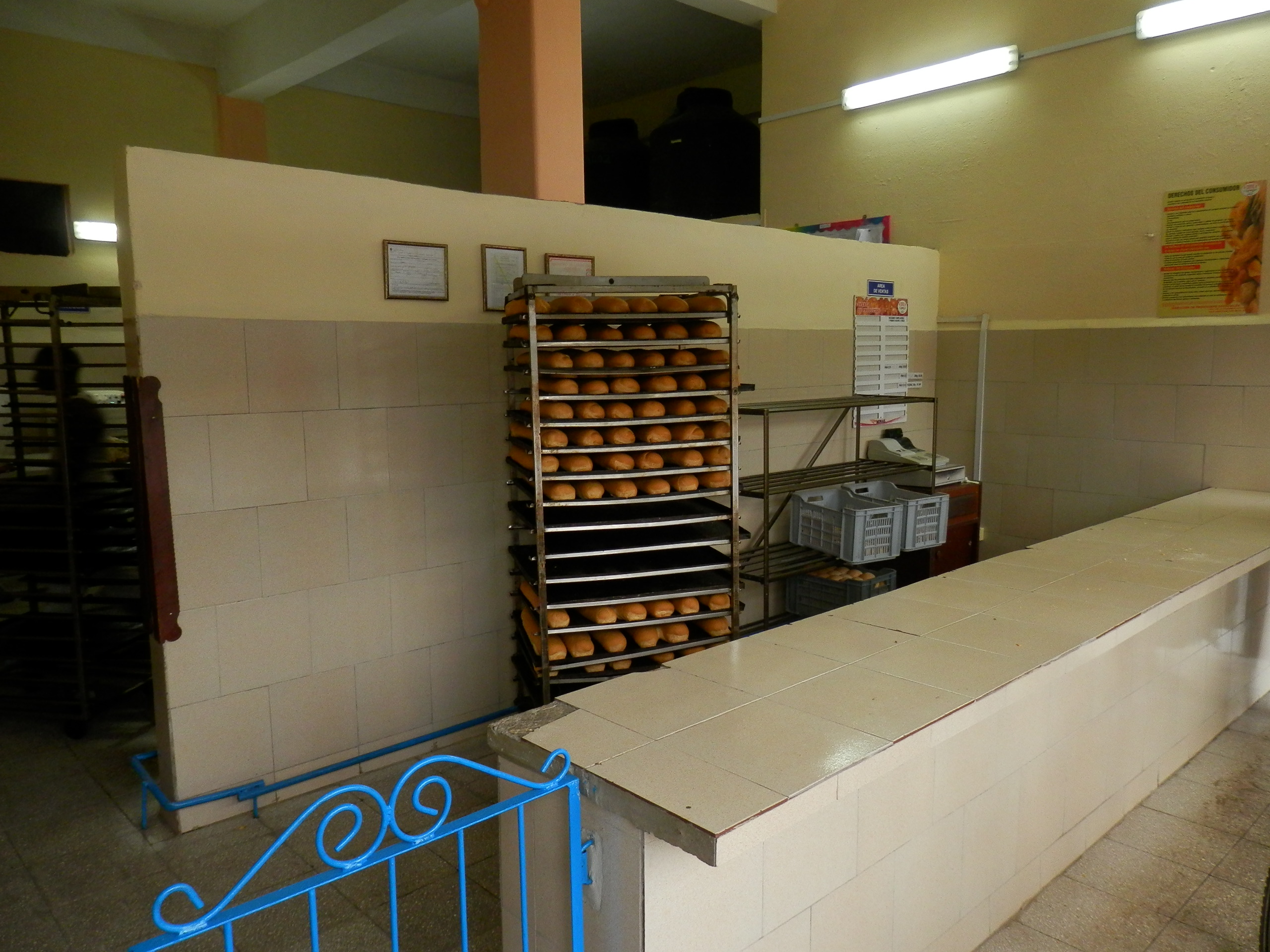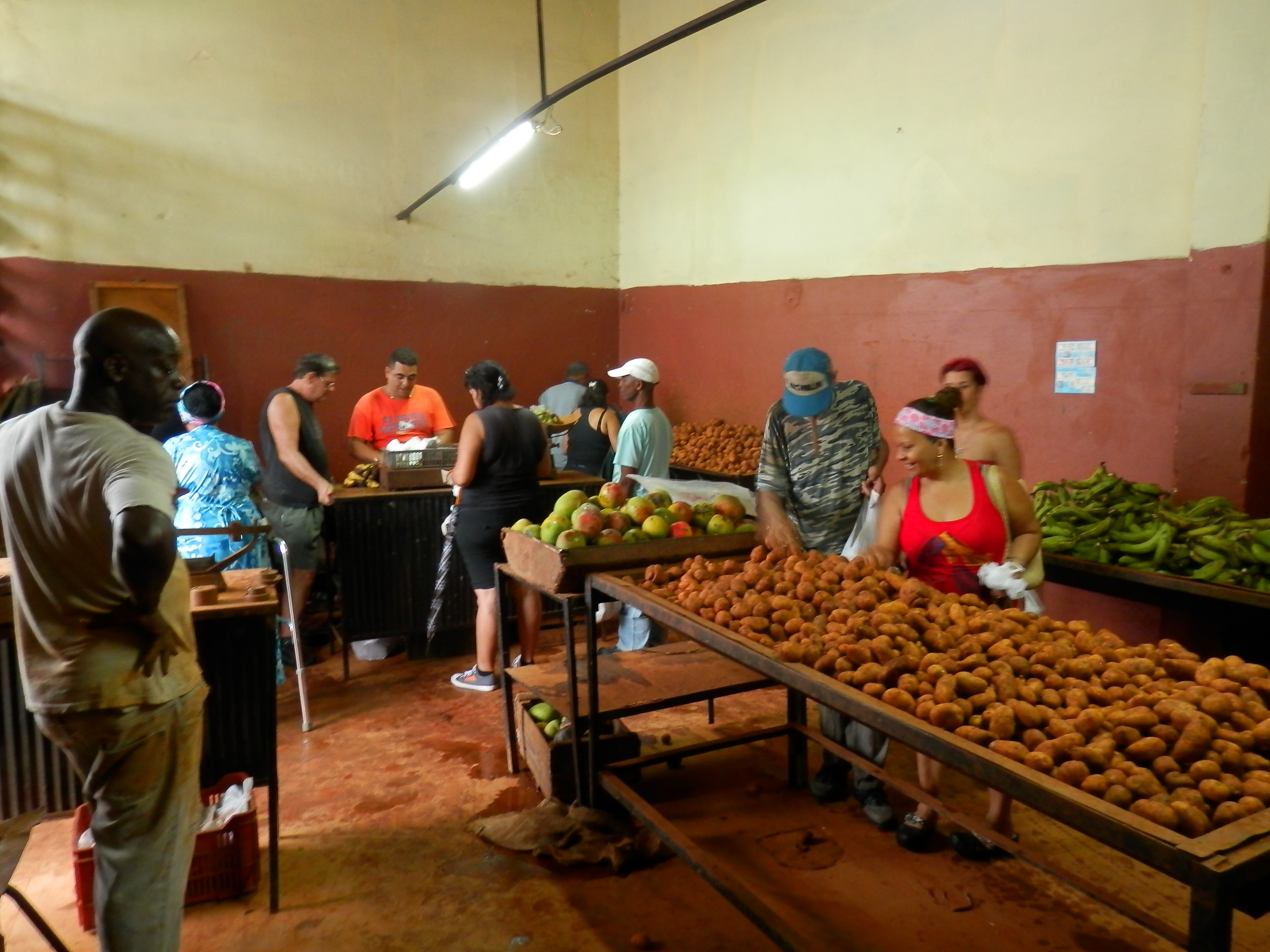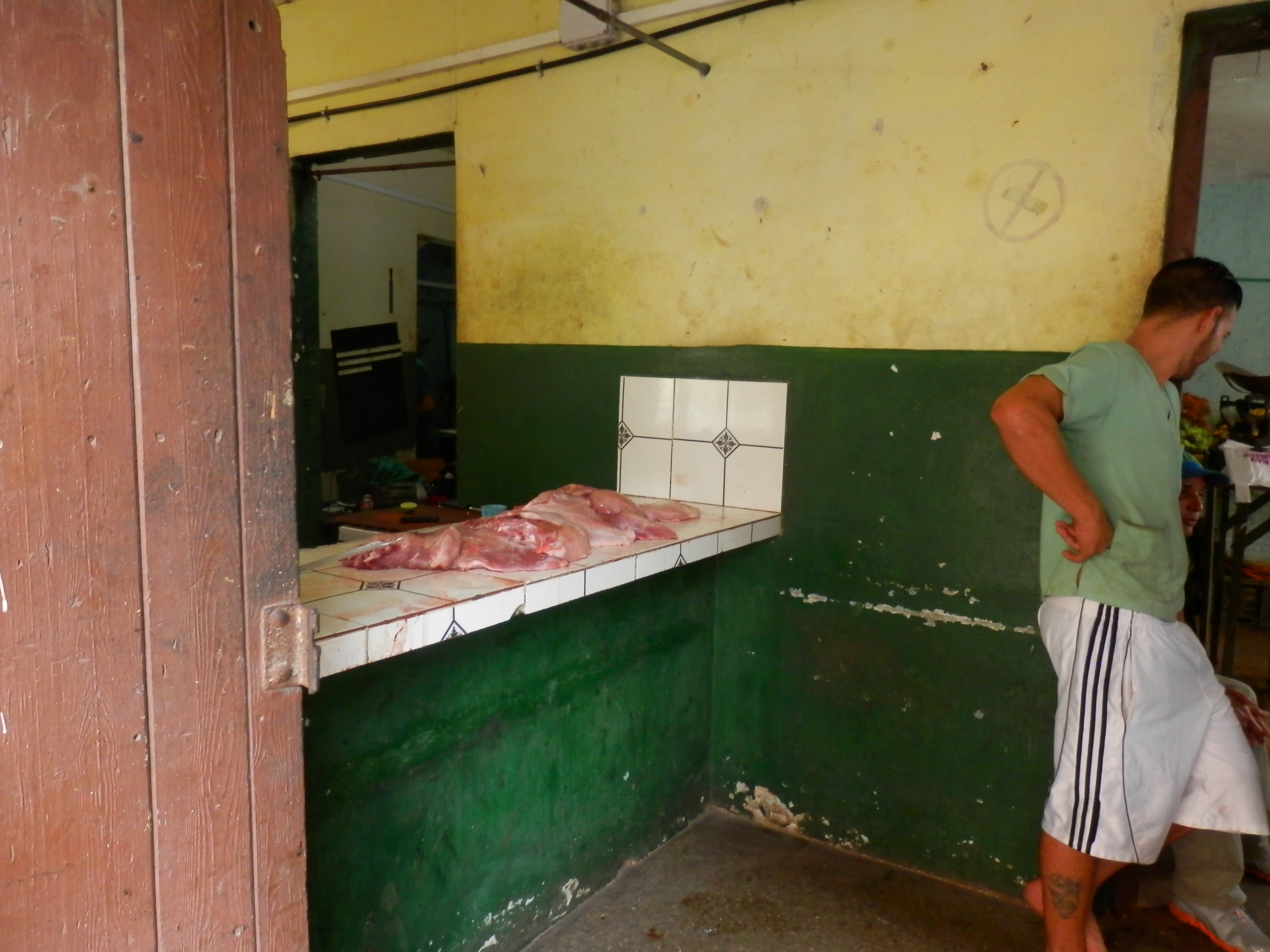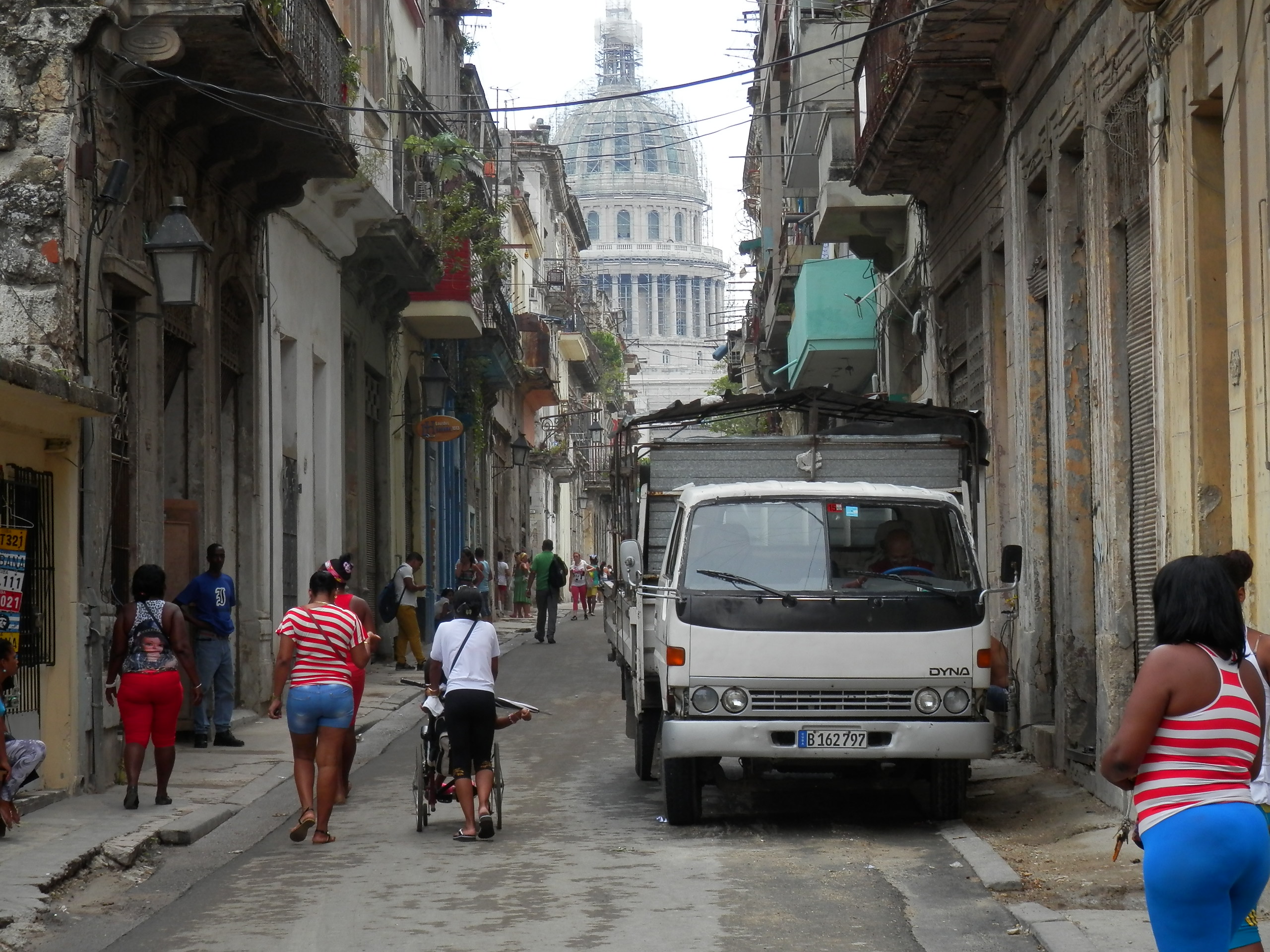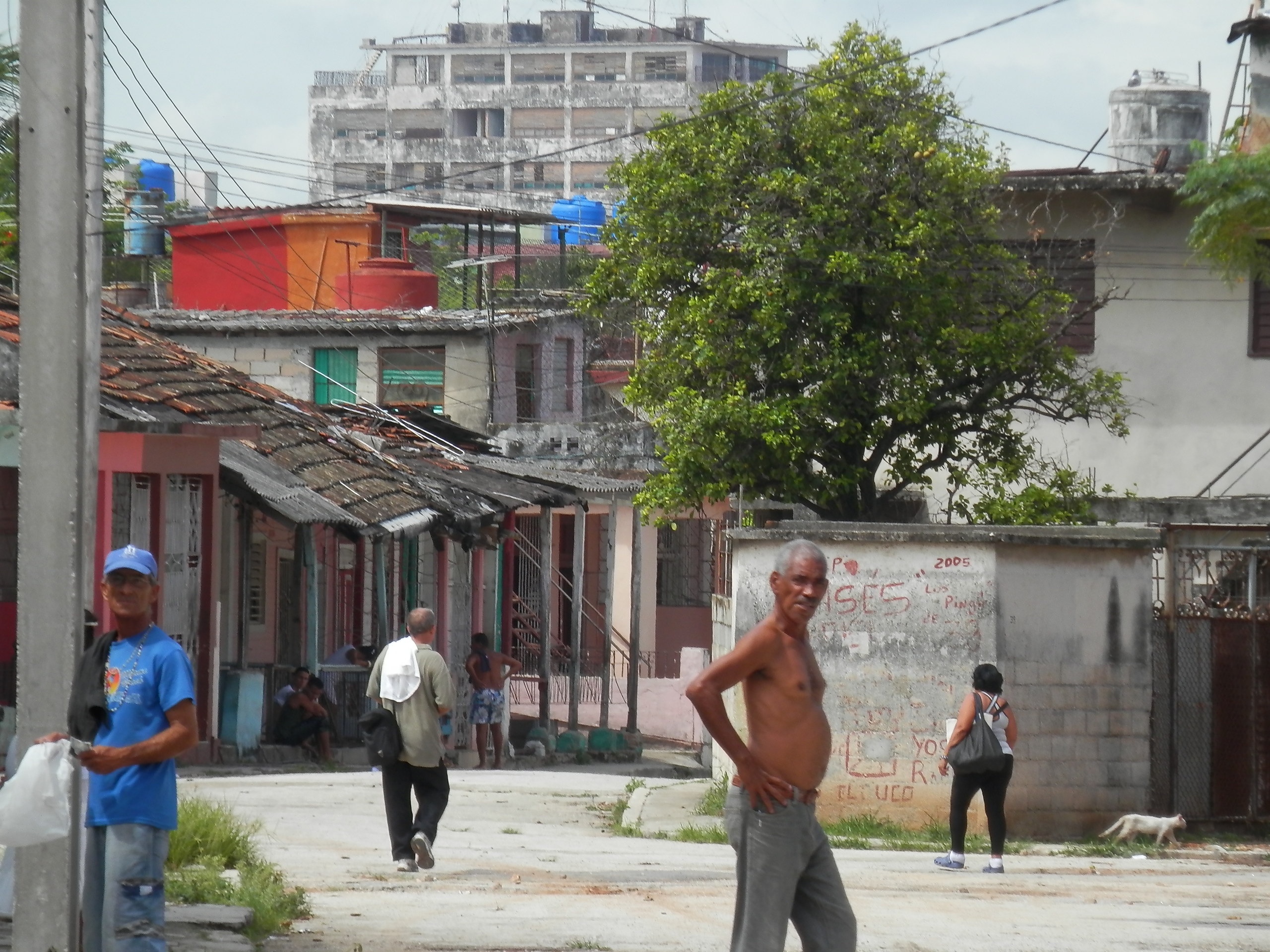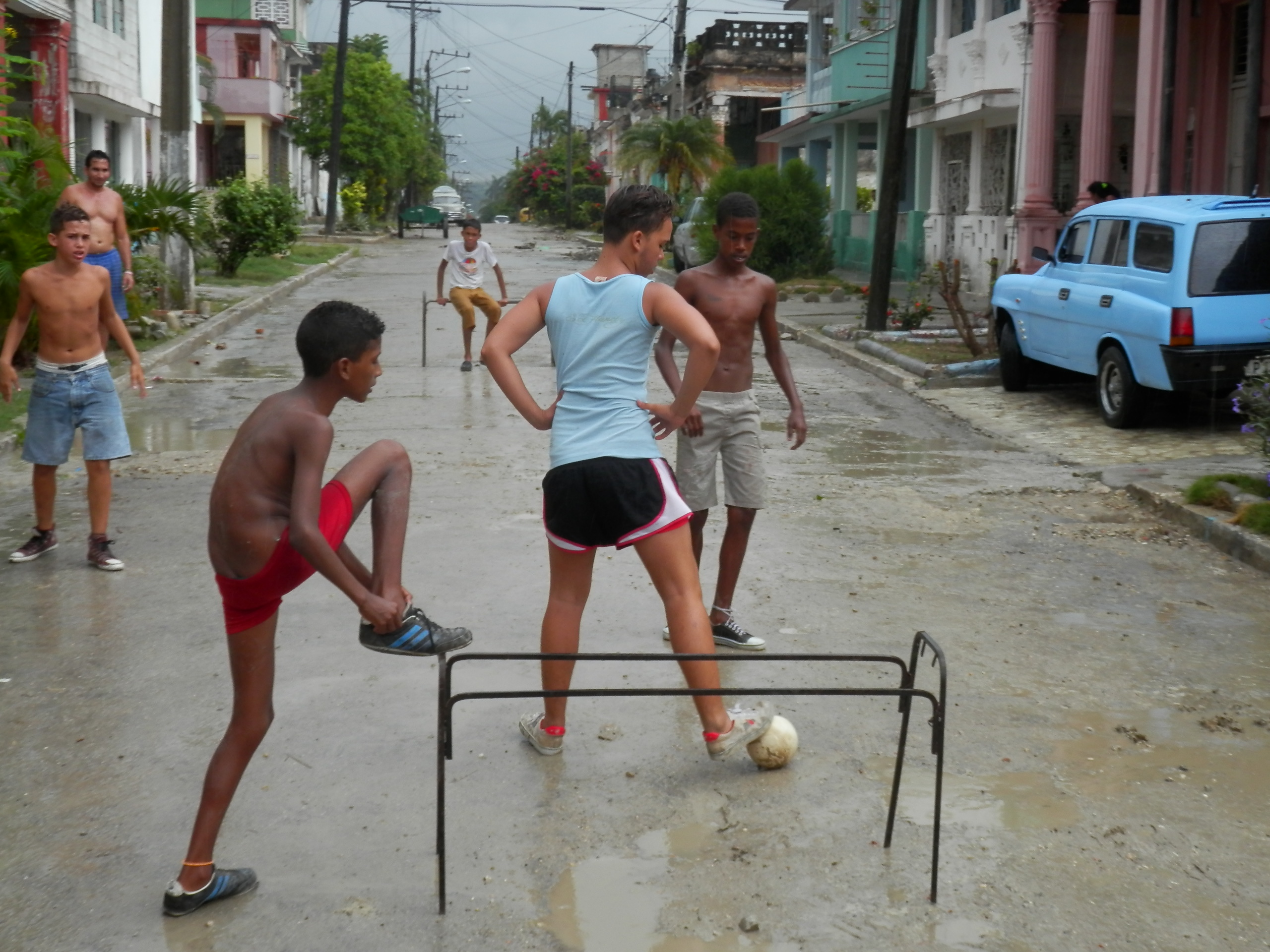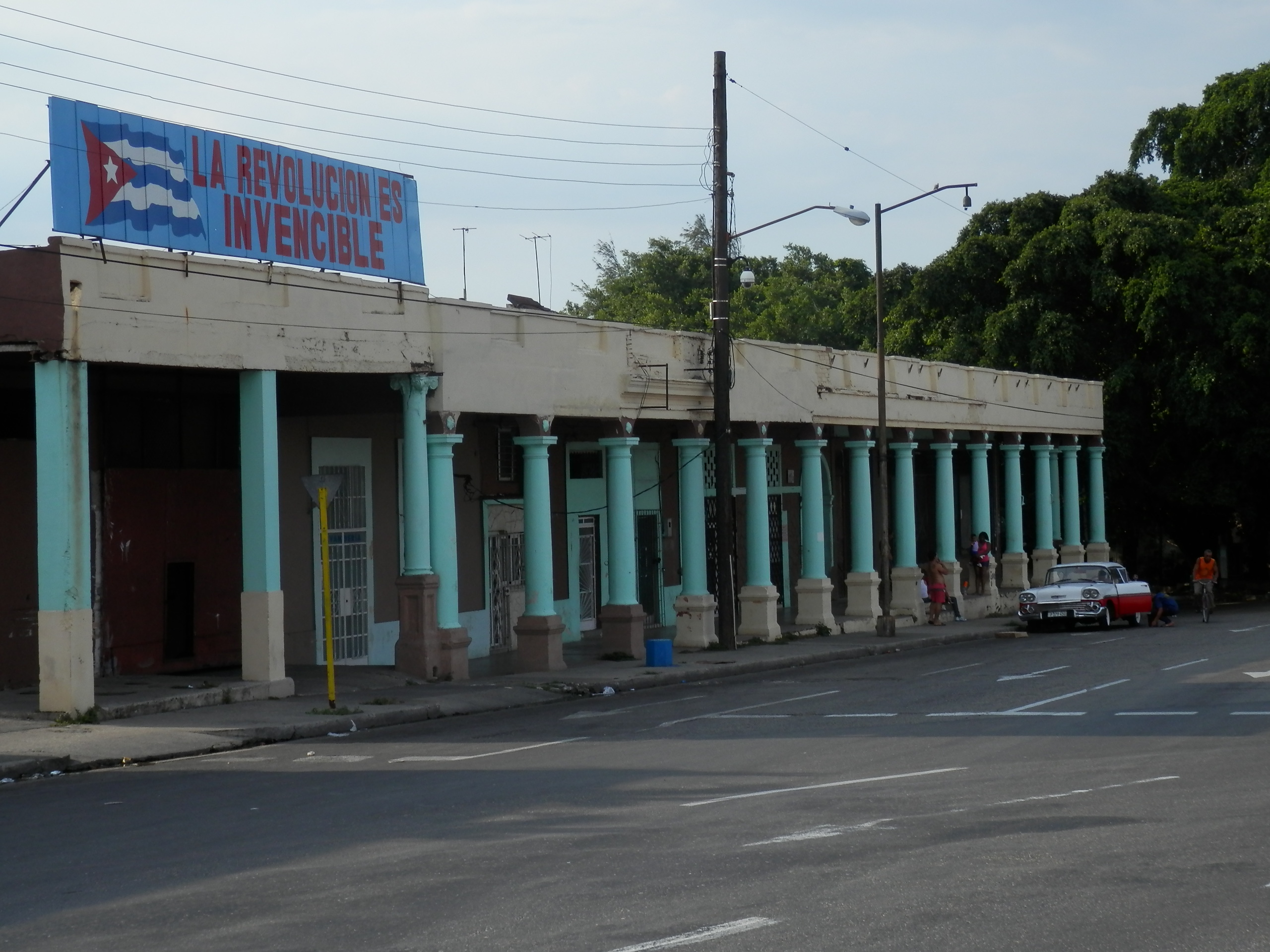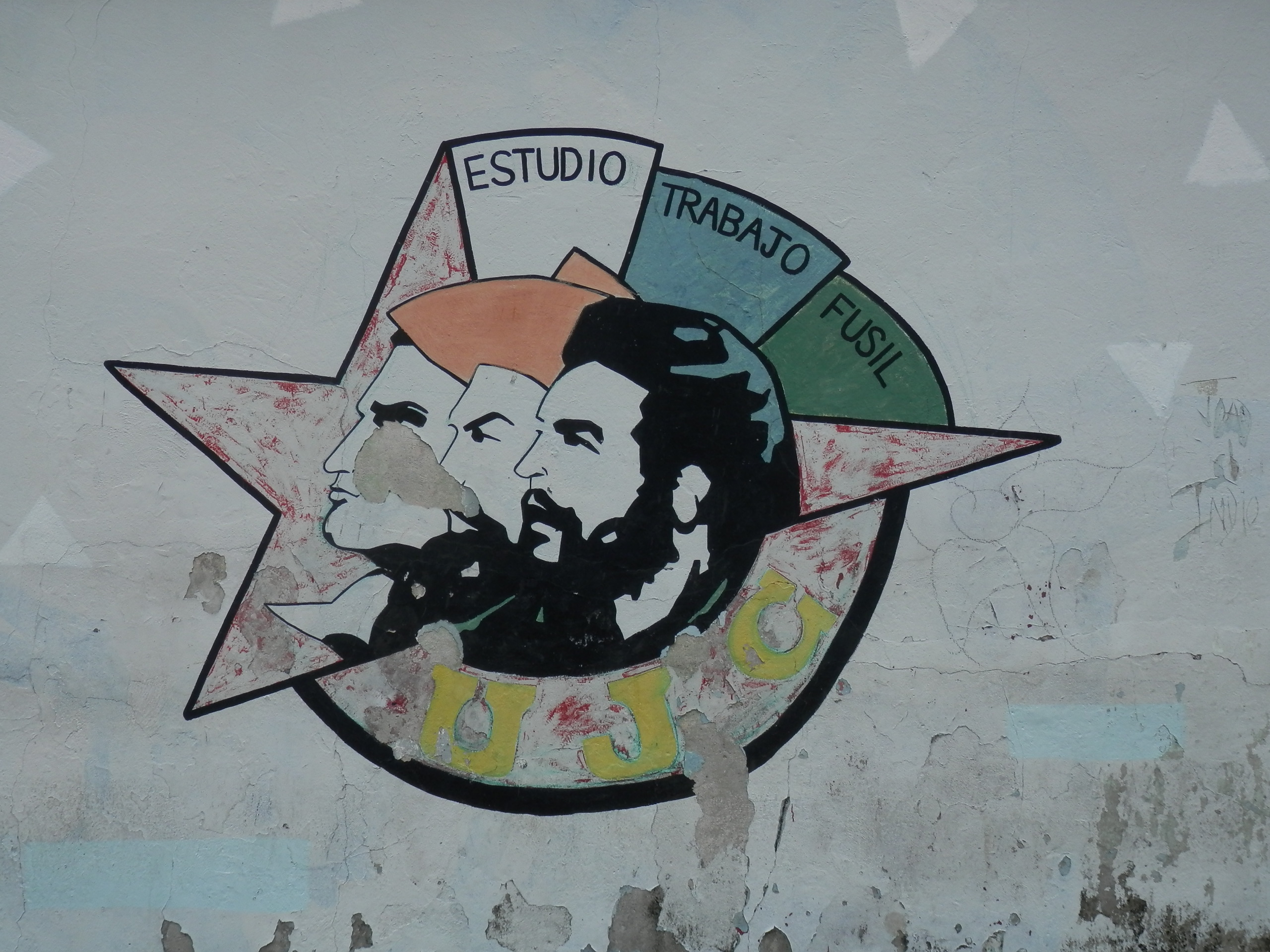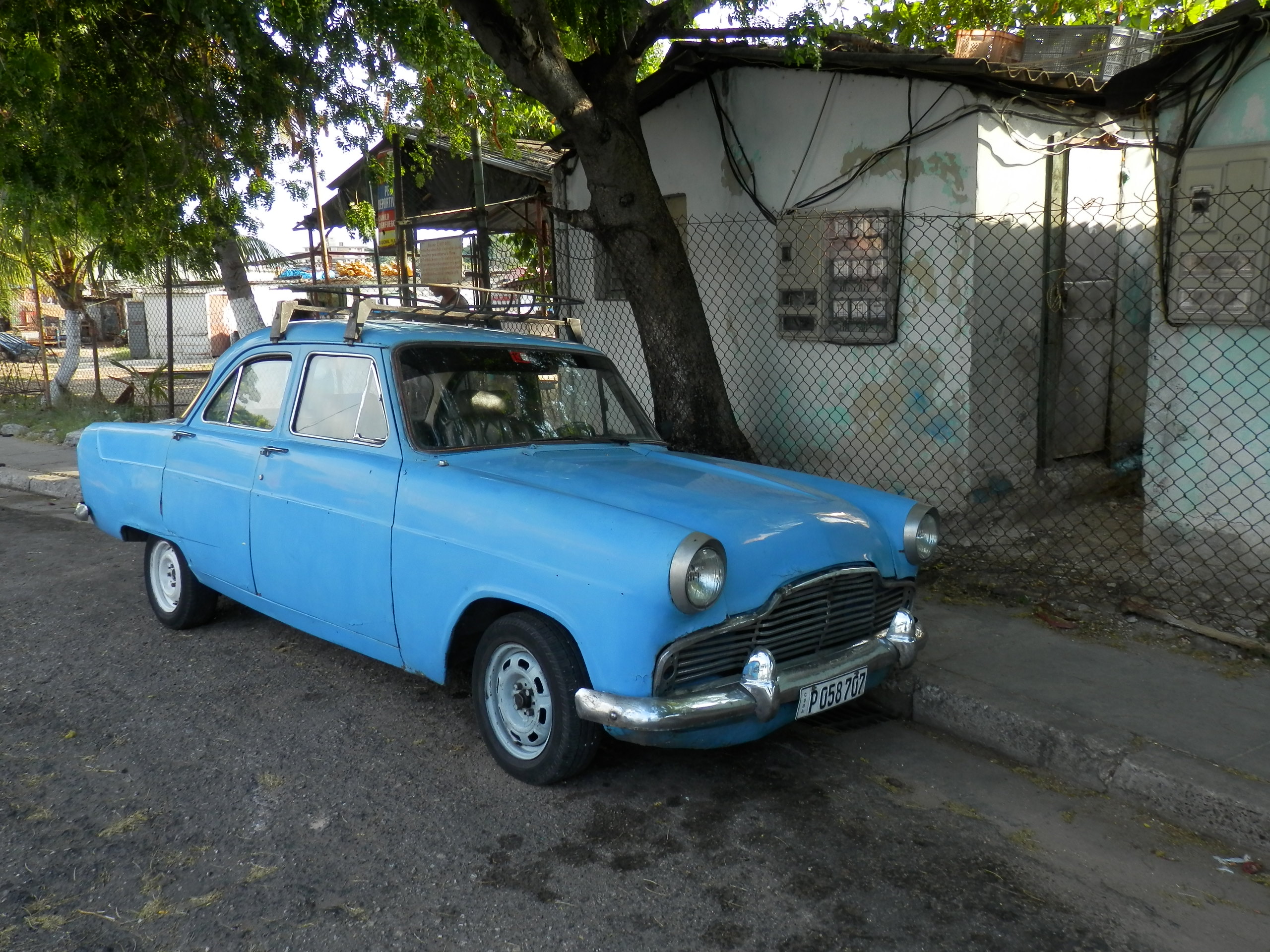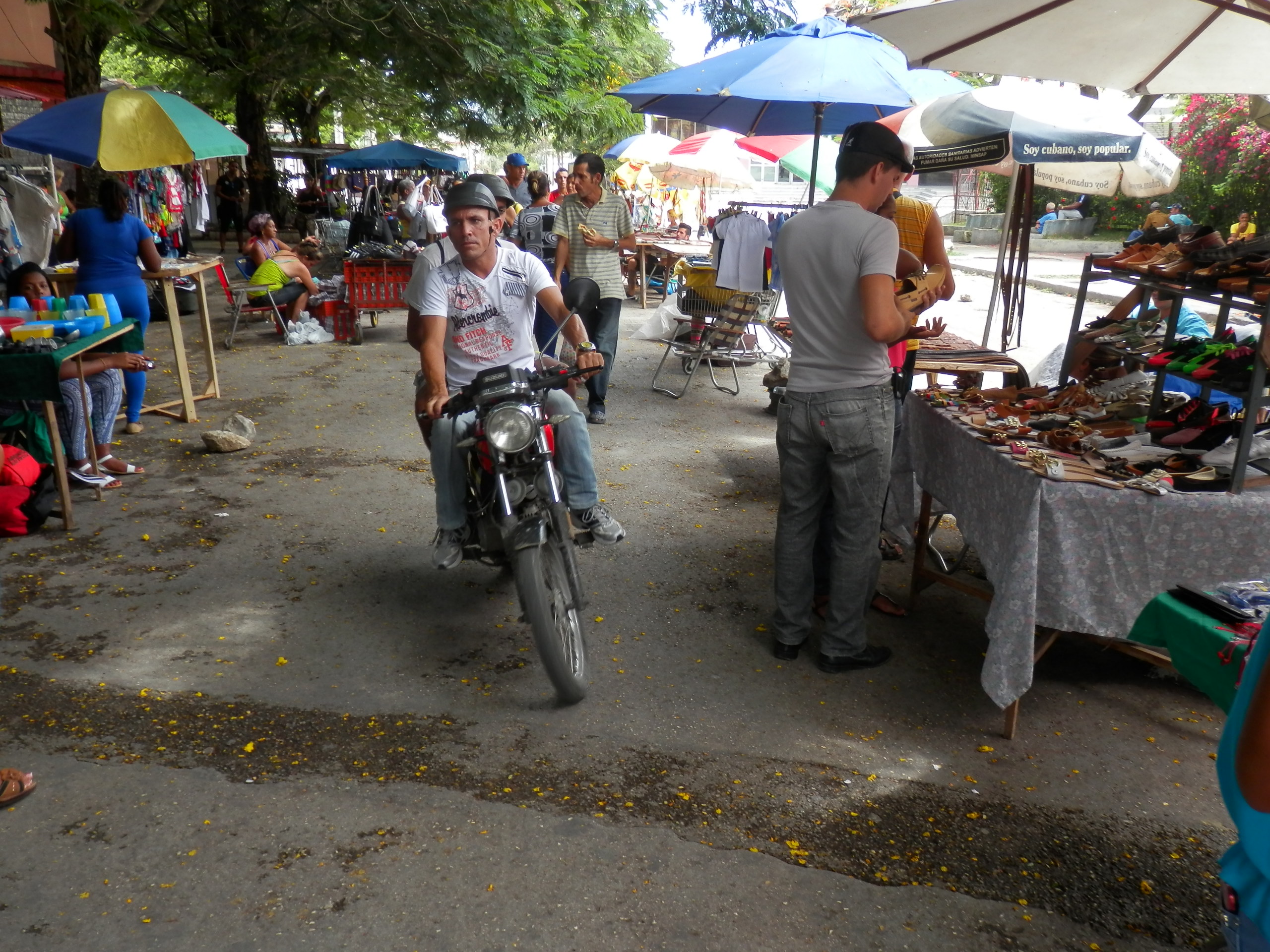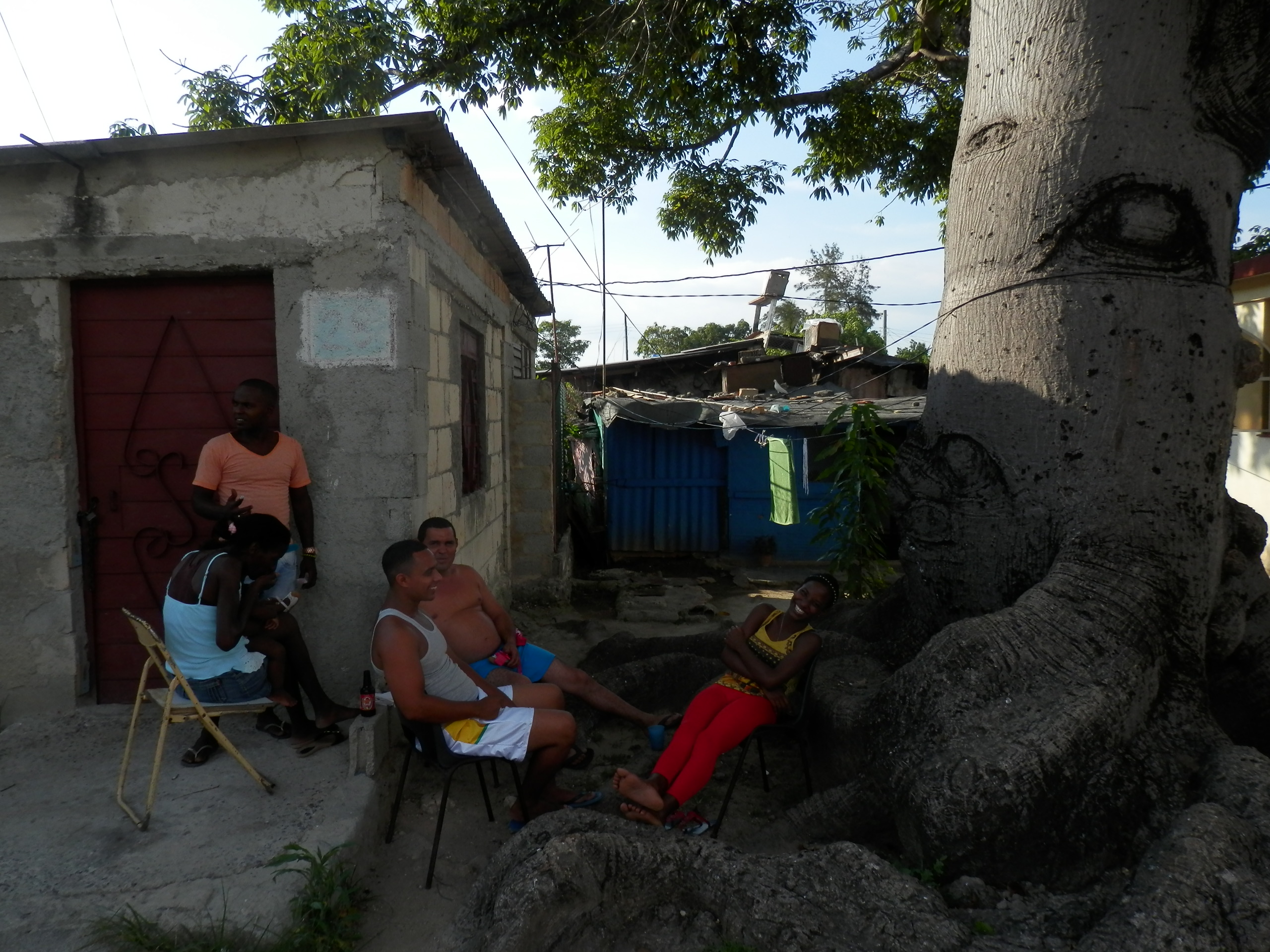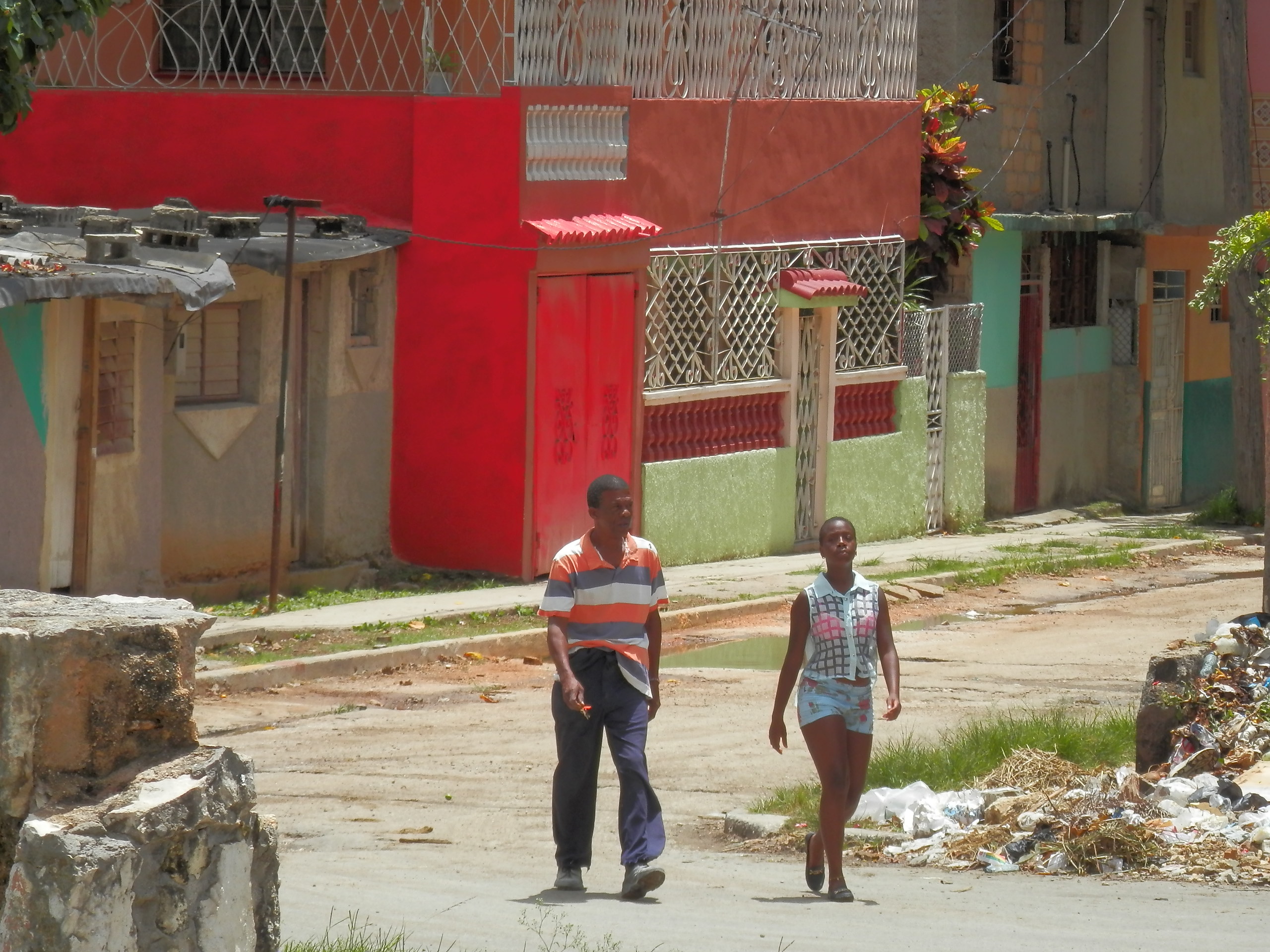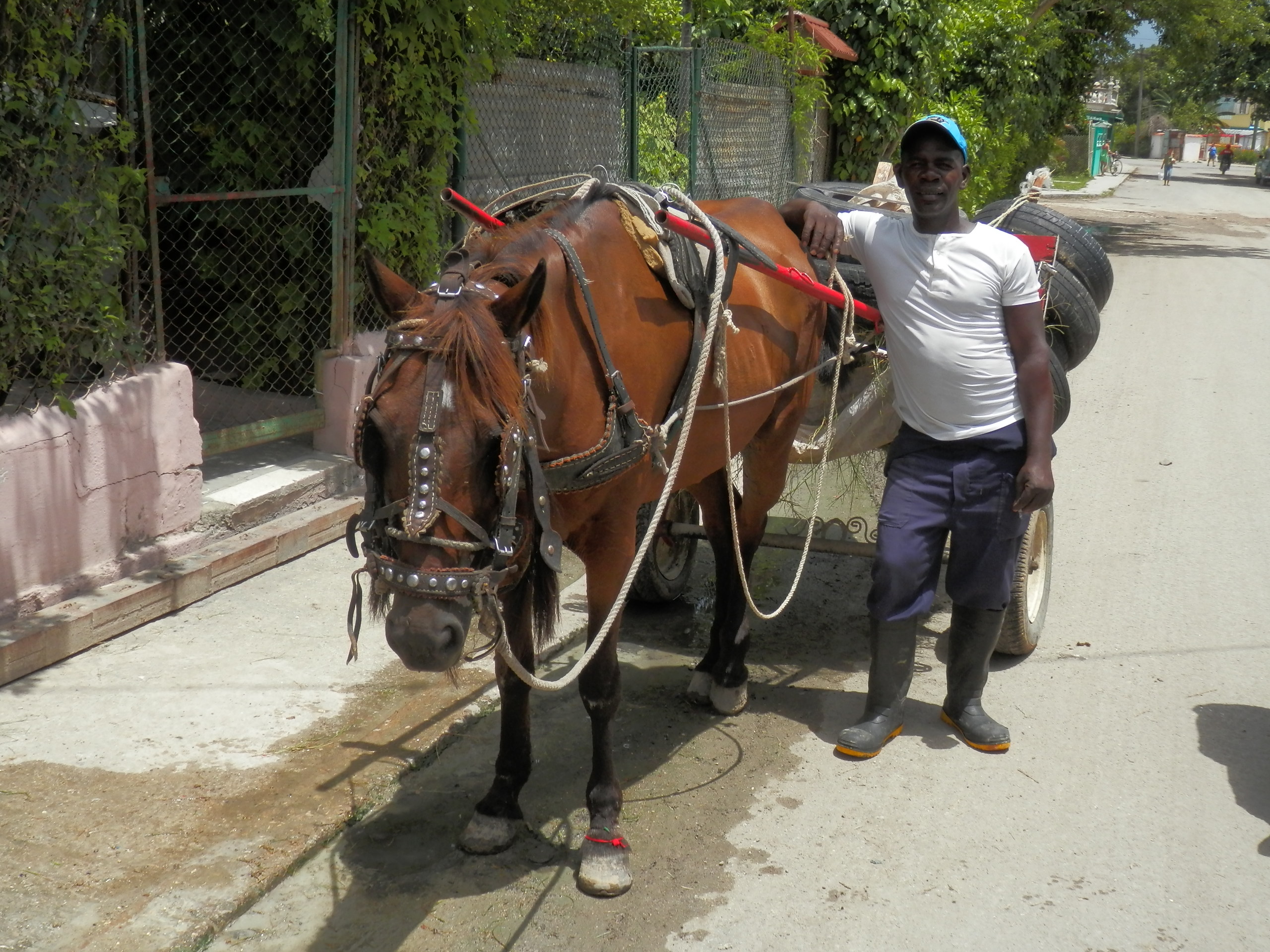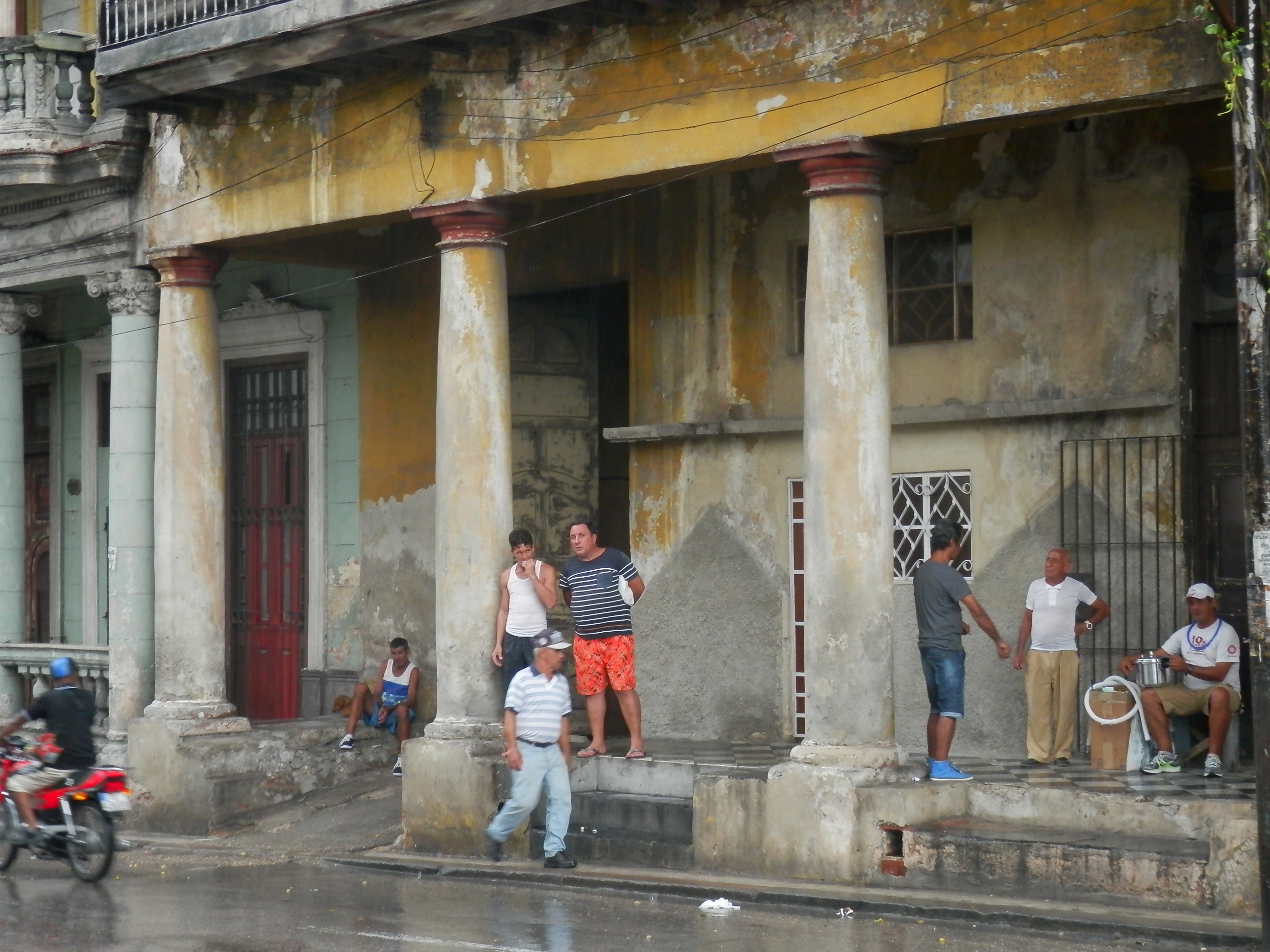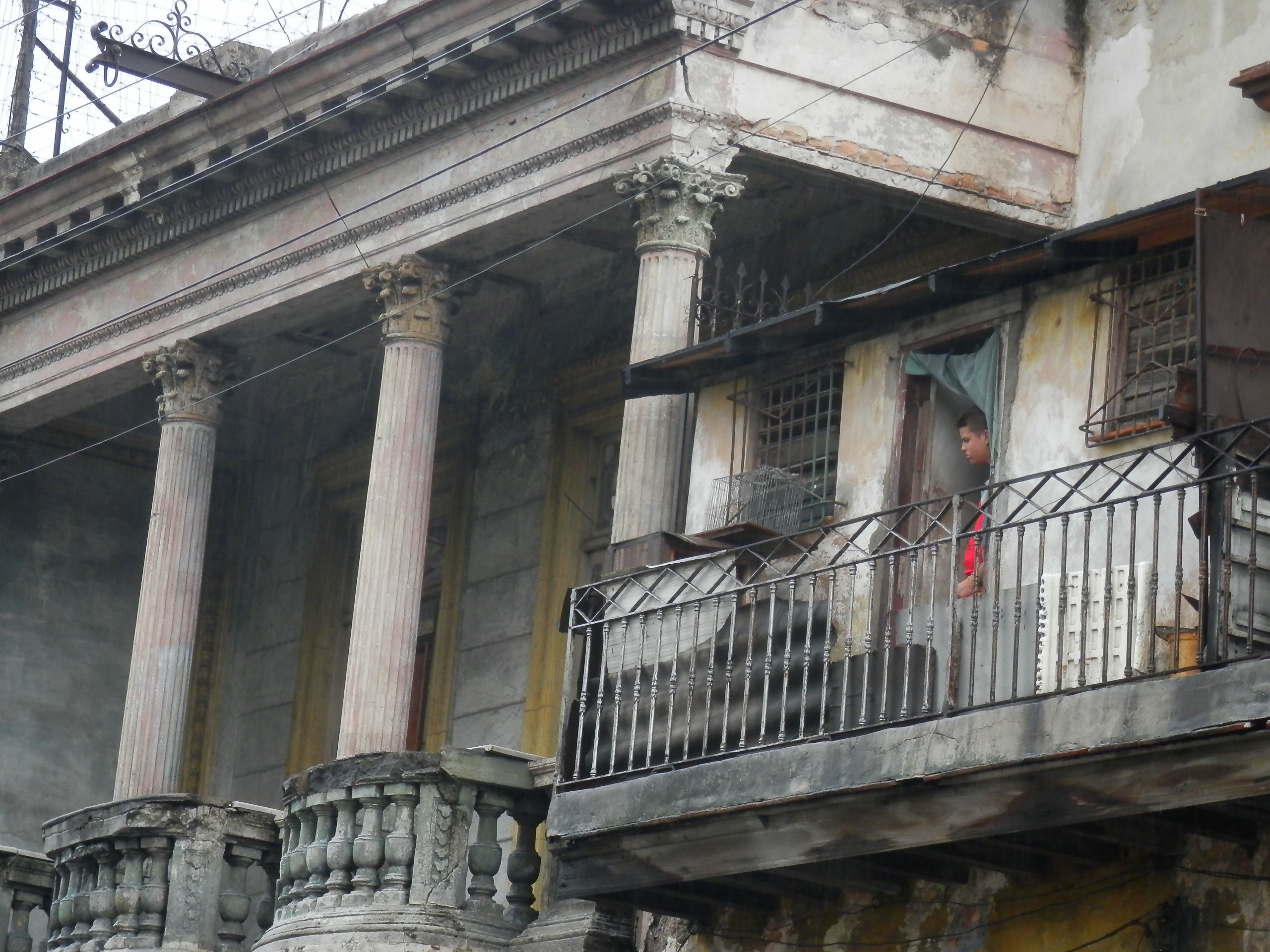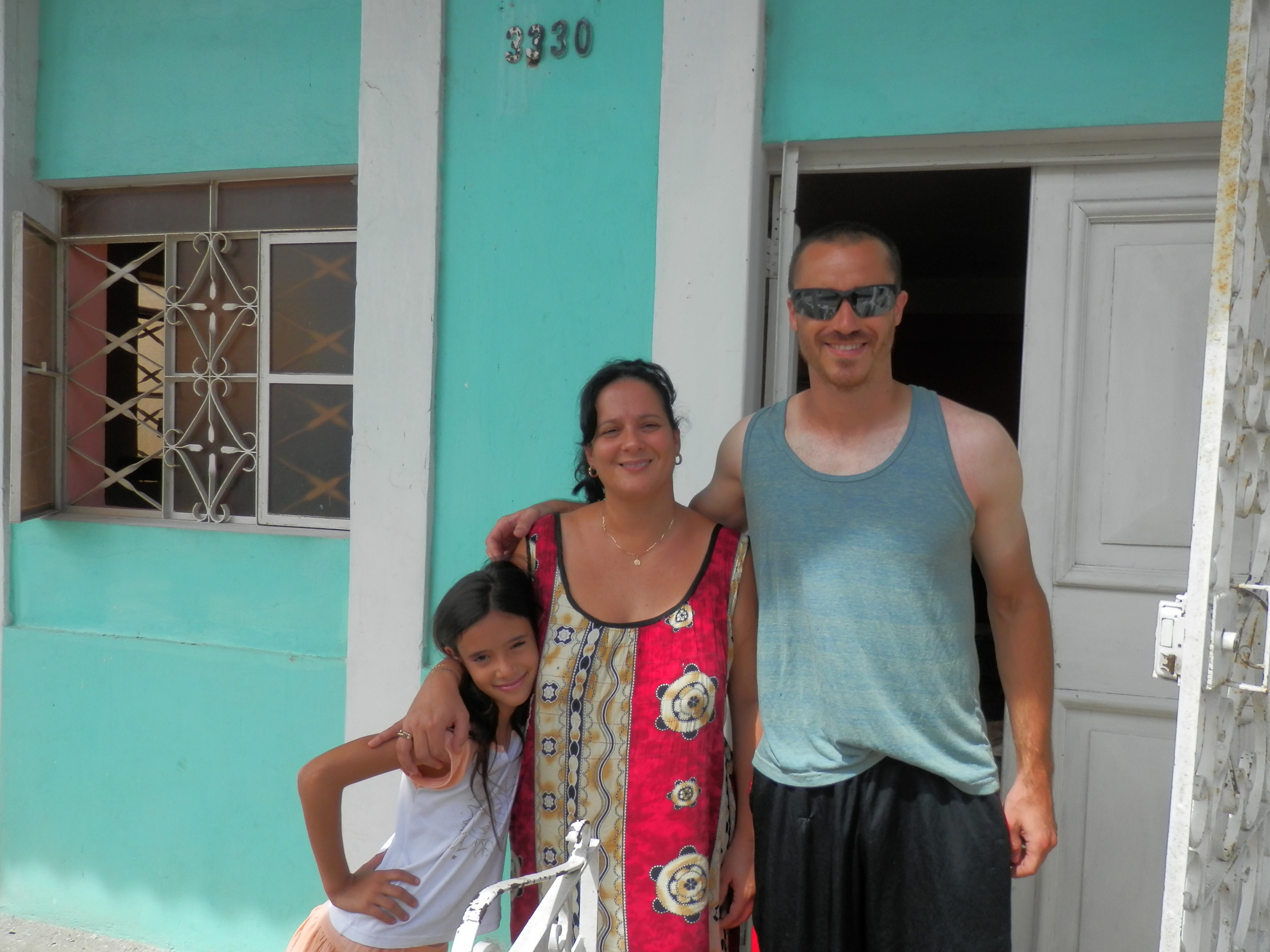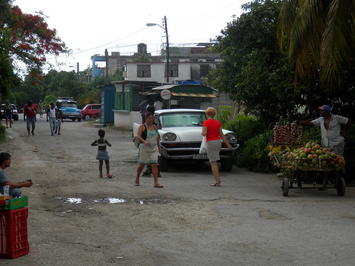
1. I’m now a week removed from my Cuba trip, where I spent 4 days in Havana biking through the city’s near-hourly mix of high heat and torrential rainfall, returning to my bed & breakfast each night covered in soot. My first few days back in Miami I spent sick and exhausted in a hotel, but managed in the latter half to pump out a Forbes article on Miami’s inequality. The piece was slammed the next morning by the Miami New Times–a local alternative rag–for making arguments that staff writer Kyle Munzenrieder found “structurally racist.” I sent an email asking him to elaborate on the racism charge (since he didn’t in the article), but haven’t heard back.
2. That said, my mind mostly remained in Cuba. It would be hard to summarize on this page everything that I learned there, since the nation has a complex history, and enforces a dizzying array of Communist-inspired regulations that would mystify Americans, and that has impoverished average Cubans. In coming weeks, I’ll explore these economic policies–and the effects of the U.S. embargo–in depth for other publications. But I’ll say a quick word here about Havana’s living conditions, peppered with a few of the more than 300 photographs I took.
While exploring Havana’s neighborhoods, the thing that jumped out was not the city’s poverty (although there was plenty of that), but its scarcity. Because Cuba’s government does not value or comprehend mass production–namely not for agriculture–there are shortages of everything. In America, we take for granted that any basic convenience is but a short drive away. But in Havana, running errands isn’t that simple. City residents have limited mobility: the bus system is cheap but unreliable, the newly-private taxi system is efficient but costly, and for most Cubans, owning a bicycle–much less an automobile–requires years of savings. So they must stick to neighborhood stores with minimal inventory, and even if they did all have cars, there would still be few outside options.
To understand why, just imagine a city where every store is literally 1% of what it would be in America.
While a U.S. pharmacy like Walgreens or CVS sells not only drugs, but numerous foods, beverages, household goods, etc., the average Havana farmacia has a few shelves with maybe 100 drugs–and that’s it. Modern U.S. grocery stores often exceed 50,000 square feet, and sell thousands of products. In Havana, different food types are sold separately in small, rickety stores that often contain one or two items. Mercados sell fruit and veggies; carnicerias sell meat; and many panaderias (pictured above) sell a low-nutrition roll that would be served as a side at a crappy American road diner. The typical gas station had not even one-tenth of what you would find in a 7-Eleven.
This isn’t surprising, since most Cubans earn about $20/month, and thus have minimal spending power. But the scarcity effects all income groups. For example, as an American tourist, I was considered massively wealthy by Cuban standards. That said, my expenditures were mostly limited to my B&B, my bike rental, bottled water, cheap cafes, and cab fares. My one splurge was taking a local couple who I had befriended out to a restaurant that, by Cuban standards, was exquisite, but that didn’t exceed the quality or cost of an Applebee’s. Over 4 days, all this cost $360. Compared to the few other U.S. tourists I met, this was an extremely economical budget–but was still more than what many Cubans spend annually.
Yet despite this, I found myself unable to buy basic things. For example, during my first night in Havana, I didn’t realize–until it was too late–that the B&B landlord had not provided toilet paper. In America, this would be a glaring oversight, but in Havana, I would discover, is normal. This forced me to navigate my neighborhood at 3am, offering pesos to the many teenage boys still standing outside, to bring out “papel higienico” from their houses. Every time I tried this, they would each explain, in rather comical fashion, that none was available. Finally I found a teenager who spoke passable English, and asked him how this could be. After sending his little brother in to find something, he explained that “in Havana, toilet paper is a delicacy–like chocolate,” and that most residents don’t just have any sitting around. So how did people cope?
“Here in Havana, we have a saying,” he quipped. “We say, ‘Cubans have a good ass. Our asses work for all kinds of paper. Toilet paper, newspaper, book paper–any kind of paper’.”
When his younger brother reemerged from the house, he was holding for me a single sheet torn from his school journal. I would later learn while interviewing impoverished Cubans that other “delicacies” included soap, meat, milk, cheese, and ice cream, not to mention the hundreds of gadgets and appliances found in a typical American home.
3. One thing I mentioned before leaving for Havana was that I wanted to see how urban street life functioned in a city suffering from 50 years of stagnation. I found much that was good and bad, but for the sake of brevity, will describe this week what was good.
Havana, both in downtown and the neighborhoods, offers a scintillating street culture dominated by people, music, and commerce (spartan as it may be). In many ways, it is an urban flaneur’s dream, as one can spend hours weaving through crowded streets full of friendly people who will spill their life details to a stranger. There are, in fact, few places one can go without finding numerous people on each block, and rather than ignoring one another, many are in perpetual communication, often yelling to each other from adjacent buildings.
This atmosphere continues well into the early morning, as mostly teenagers stand on corners to laugh, drink and sing. For them, a rich gringo passerby is not a target, but a source for amusing dialogue, especially since they will bend over backwards to try overcoming the language barrier.
But this street life seems less rosy when you consider that it is rooted in hardship. Many Cubans are forced by poverty to live cramped together–sometimes 10 to a house, according to one person I spoke with–so naturally they would escape to the street. Because some cannot afford front doors and windows, much less advanced security, there is little privacy, and people treat sidewalks like their extended living rooms. Because so few people own cars–and because those cars run slower than in America–traffic is less menacing, allowing pedestrians to linger in roadways. Because parks are in such disrepair, sporting children instead compete in the streets. And the built fabric itself is so narrow because modern buildings are seldom constructed.
An equally fascinating aspect of Havana’s street culture, to be covered next week, was the physical decline. It was not difficult to tell that Havana was once a very advanced society indeed, defined by a merchant and governing class who had sophisticated urbanist sensibilities. At times while biking through Havana’s mild hills, I would get these weird flashbacks of San Francisco, when observing large, elaborate Spanish architecture that interspersed gracefully alongside pocket parks, public stairways and boulevards. But imagine if San Francisco had undergone 50 years of Detroit-style decline and neglect, and you’ll get an idea of the blight that pervades Havana. Many of the photos I provide next week will alarm you.
4. I could go on and on about other aspects of Havana’s street life, but here are a few tidbits that readers will find interesting.
– As might be expected from a Communist dictatorship, there were few religious symbols, but numerous political insignia celebrating the Revolution’s enduring strength. Ironically, many of these signs were in disrepair.
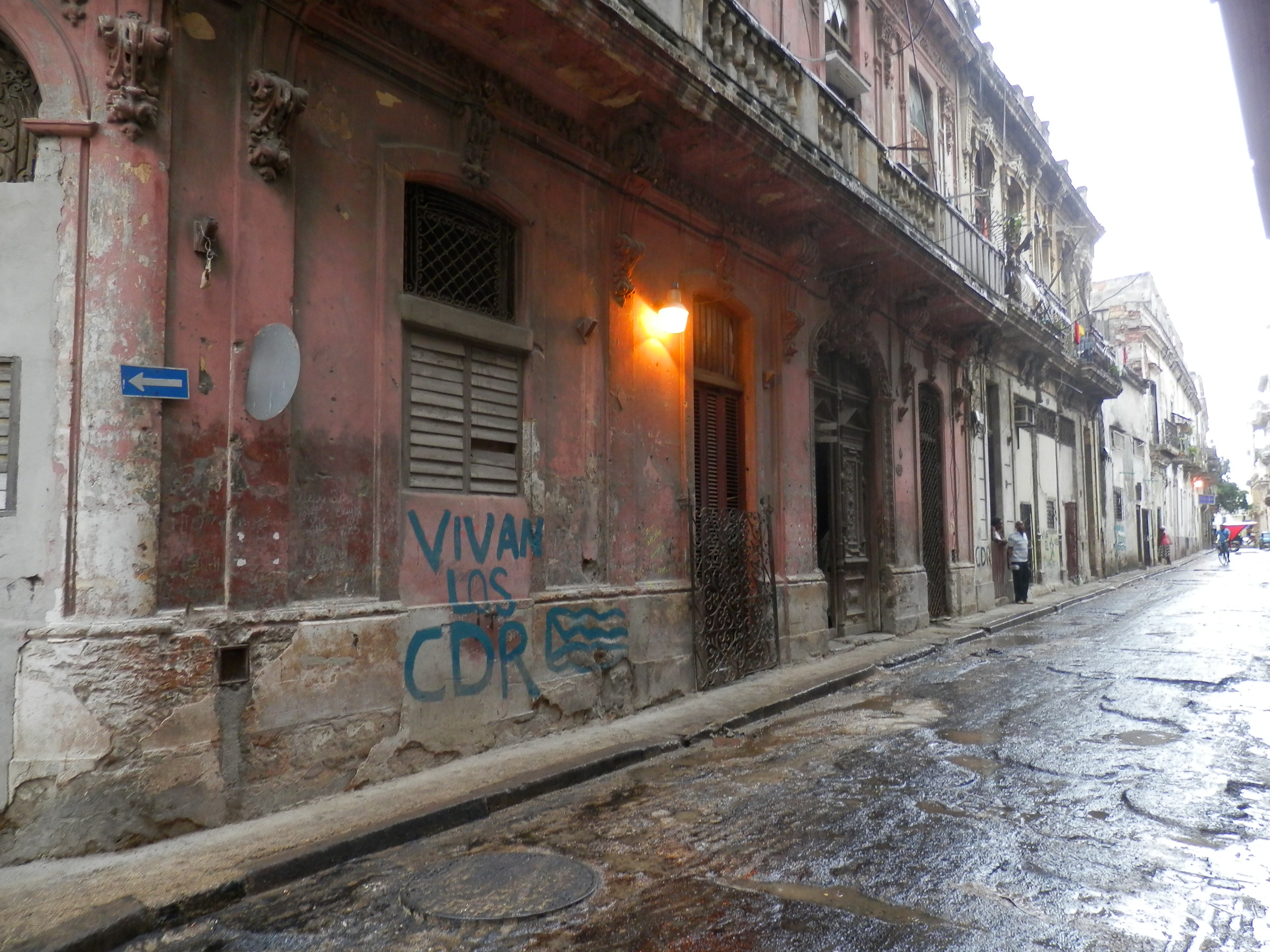
A celebration of CDR, the network of neighborhood watchdogs tasked with upholding the Communist order
– Cuba’s many old automobiles might be charming, but are terrible for the environment. Old age and poor maintenance mean that many spew out toxic exhaust that blows into pedestrians’ faces. In the central parts of Havana, where streets were narrow and buildings taller, the stench lingers, making life unbreathable.
They also frequently break down; it’s hard to bike 10 blocks without finding some car on the side of the road, hood popped.
– In America, farmer’s markets have become boutique destinations that sell products of greater quality and expense than what is found in a supermarket. Tables are often run by “gentlemen farmers” who view their activity as a hobby. In Havana, by contrast, such markets expose the desperation of the Cuban people, as many tables offer screws, dishes, spare auto parts, and whatever else a family may have scavenged.
– Street drainage is terrible after it rains.
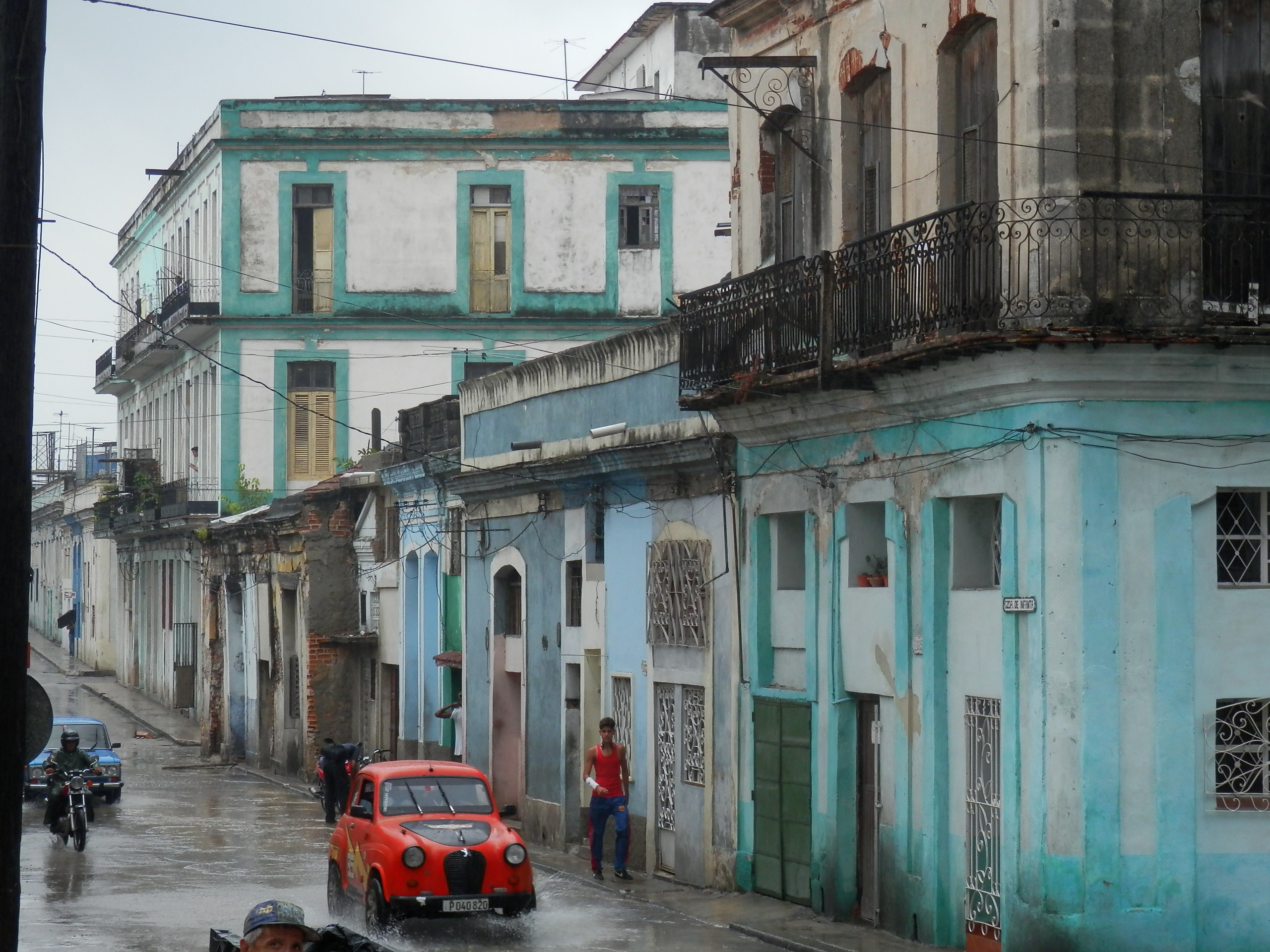
– And more:
This piece originially appeared at Market Urbanism.
Scott Beyer is traveling the nation to write a book about revitalizing U.S. cities. His blog, Big City Sparkplug, features the latest in urban news. Originally from Charlottesville, VA, he is now living in different cities month-to-month to write new chapters.
